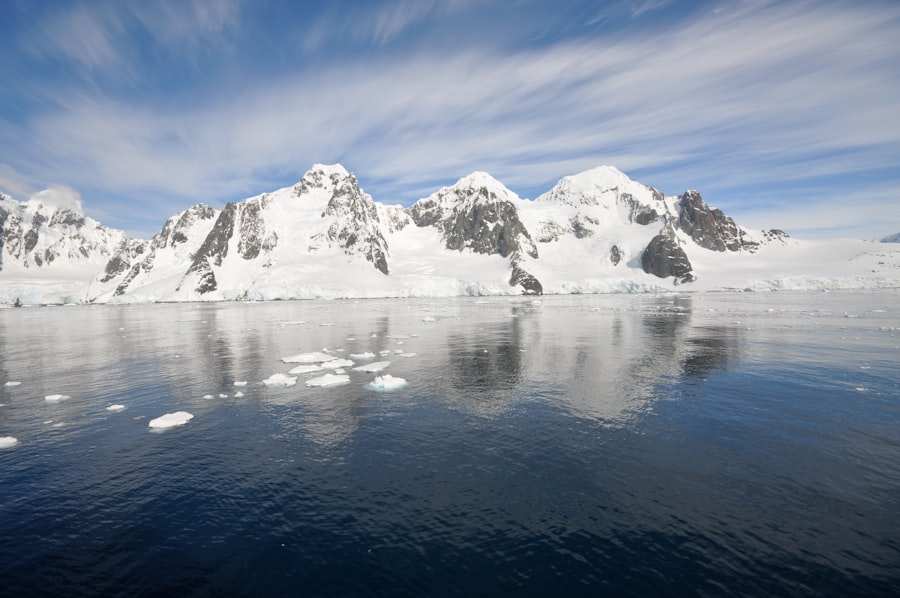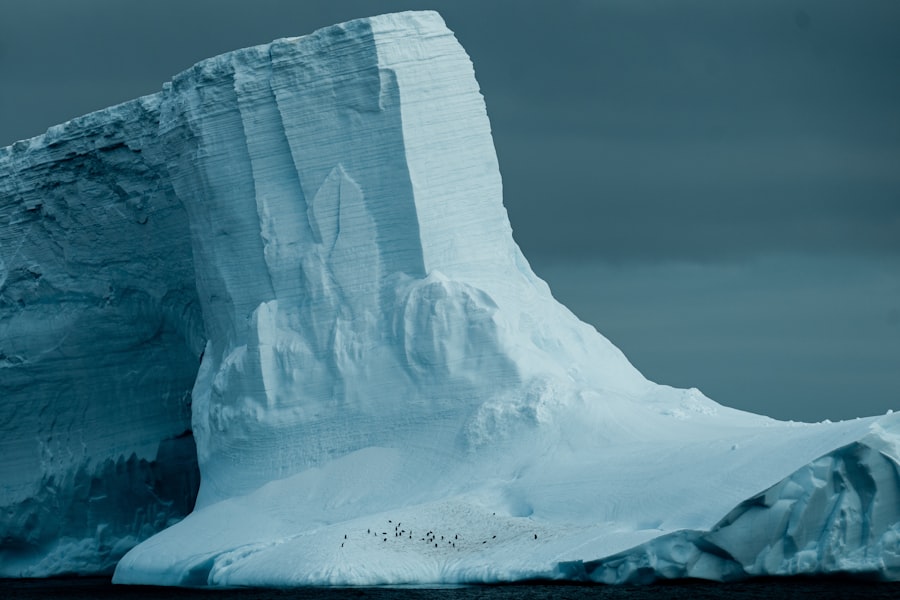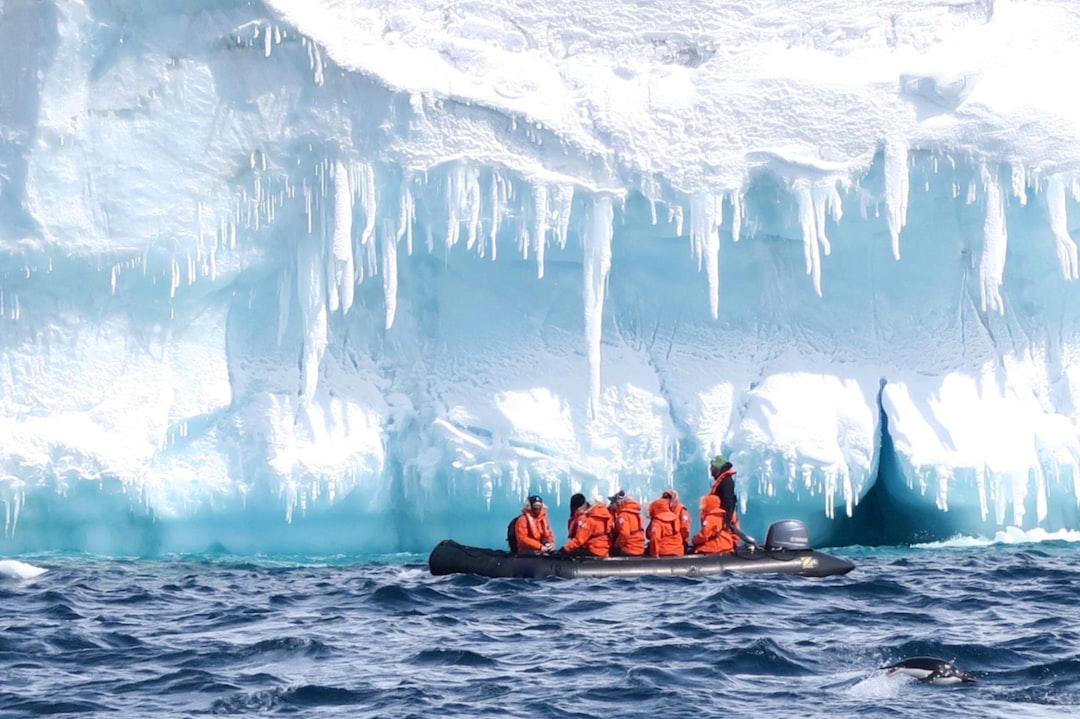The Drake Passage, a body of water that separates South America from Antarctica, is renowned for its tumultuous seas and unpredictable weather. Stretching approximately 800 kilometers (500 miles) from Cape Horn to the Antarctic Peninsula, this passage is often regarded as one of the most challenging maritime routes in the world. Sailors and adventurers alike have long been captivated by its fierce reputation, which stems from the confluence of the Atlantic and Pacific Oceans.
The currents that swirl through this narrow strait can create formidable waves, making navigation a daunting task for even the most experienced mariners. Crossing the Drake Passage is not merely a test of skill; it is also a rite of passage for those seeking to explore the icy wonders of Antarctica. The journey often begins with a sense of anticipation and excitement, as travelers prepare to embark on an adventure that promises both beauty and peril.
The passage is notorious for its rough seas, with waves that can reach heights of up to 15 meters (50 feet) during storms. This unpredictability has earned it the nickname “Drake Shake,” a term that evokes both fear and fascination among those who dare to traverse its waters.
Key Takeaways
- The Drake Passage is a challenging route to Antarctica, known for its rough seas and unpredictable weather.
- The mystique of the Drake Passage lies in its reputation as one of the most treacherous waterways in the world, adding an element of adventure to the journey.
- The unique beauty of the Antarctic afterglow is a breathtaking sight, with the sun setting in a way that creates stunning colors and reflections on the icy landscape.
- The wildlife of the Drake Passage includes a diverse range of species such as penguins, seals, and whales, making it a paradise for nature enthusiasts.
- Navigating the Drake Passage from a captain’s perspective requires skill, experience, and careful planning to ensure the safety of the crew and passengers.
The Mystique of the Drake Passage
The mystique surrounding the Drake Passage is palpable, drawing explorers, scientists, and tourists from around the globe. Its allure lies not only in its challenging conditions but also in the rich history and stories that have emerged from its depths. The passage has been a significant route for explorers since the Age of Discovery, serving as a gateway to the uncharted territories of Antarctica.
Tales of shipwrecks, daring rescues, and remarkable discoveries have woven a tapestry of intrigue that continues to captivate the imagination.
The convergence of ocean currents creates a unique marine environment that supports a diverse array of wildlife.
This rich biodiversity adds to the passage’s mystique, as travelers are often treated to sightings of majestic whales, playful seals, and soaring seabirds. The combination of treacherous waters and breathtaking wildlife creates an experience that is both exhilarating and humbling, leaving an indelible mark on those who venture through this remarkable region.
The Unique Beauty of the Antarctic Afterglow

As one crosses the Drake Passage and approaches Antarctica, the landscape transforms dramatically. The unique beauty of the Antarctic afterglow is a sight to behold, characterized by vast expanses of icebergs glistening under the sun’s soft rays. The ethereal hues of blue and white create a surreal atmosphere that feels almost otherworldly.
This stark yet stunning environment serves as a reminder of nature’s raw power and fragility. The afterglow of Antarctica is not just visual; it is an experience that engages all the senses. The crisp air carries the scent of salt and ice, while the sounds of cracking ice and distant seals echo across the landscape.
As travelers step onto the frozen continent, they are enveloped in a sense of tranquility that contrasts sharply with the tumultuous waters they have just navigated. This serene beauty invites reflection and appreciation for the planet’s most remote regions, fostering a deep connection between humanity and nature.
The Wildlife of the Drake Passage
| Species | Population | Conservation Status |
|---|---|---|
| Wandering Albatross | 10,000 pairs | Vulnerable |
| Antarctic Petrel | Unknown | Least Concern |
| Blue Whale | Unknown | Endangered |
| Leopard Seal | Unknown | Least Concern |
The Drake Passage is not only a challenging route but also a thriving ecosystem teeming with life. The nutrient-rich waters support an abundance of marine species, making it a vital feeding ground for various animals. Among these are several species of whales, including humpbacks, orcas, and minke whales, which can often be spotted breaching or feeding in the area.
Their majestic presence adds an element of wonder to any journey through the passage. In addition to whales, seabirds such as albatrosses and petrels soar gracefully above the waves, their wings spanning impressive distances as they glide effortlessly on ocean breezes. These birds are not only beautiful but also play a crucial role in maintaining the ecological balance of the region.
The diverse wildlife found in the Drake Passage serves as a reminder of the interconnectedness of all living things and highlights the importance of preserving these fragile ecosystems for future generations.
Navigating the Drake Passage: A Captain’s Perspective
For captains navigating the Drake Passage, every journey presents unique challenges and opportunities. Experienced mariners understand that preparation is key when facing the unpredictable conditions that characterize this waterway. They meticulously study weather patterns, ocean currents, and potential hazards to ensure safe passage for their vessels and passengers.
A captain’s ability to read the sea and make quick decisions can mean the difference between a smooth crossing and a harrowing experience. The psychological aspect of navigating the Drake Passage cannot be understated. Captains often find themselves balancing their own instincts with the expectations of their crew and passengers.
They must instill confidence while remaining vigilant to changing conditions. This dual responsibility requires not only technical skill but also strong leadership qualities. As they guide their ships through turbulent waters, captains become storytellers, sharing tales of past crossings and instilling a sense of adventure in those aboard.
The Science of the Drake Passage

The Drake Passage is not only significant for its navigational challenges but also for its scientific importance. Researchers study this region to gain insights into oceanography, climate change, and marine biology. The unique convergence of currents creates an environment ripe for scientific exploration, allowing scientists to investigate everything from nutrient cycling to species distribution.
Understanding these dynamics is crucial for predicting how climate change will impact marine ecosystems in this sensitive area. Moreover, the Drake Passage serves as a natural laboratory for studying global climate patterns. The interaction between warm and cold ocean currents influences weather systems far beyond its borders.
By monitoring changes in temperature, salinity, and biodiversity within this passage, scientists can better understand how climate change affects not only local ecosystems but also global weather patterns. This research underscores the importance of preserving such vital regions for future generations.
The History of Exploration in the Drake Passage
The history of exploration in the Drake Passage is rich with tales of bravery and discovery. Early explorers like Sir Francis Drake navigated these treacherous waters in search of new trade routes and territories during the late 16th century. Their journeys laid the groundwork for future expeditions to Antarctica, igniting a passion for exploration that continues to this day.
The passage became synonymous with adventure as explorers faced harsh conditions in pursuit of knowledge about uncharted lands. Throughout history, numerous expeditions have ventured into these waters, each contributing to our understanding of Antarctica’s geography and ecology. Notable figures such as Ernest Shackleton and Robert Falcon Scott embarked on legendary journeys through the Drake Passage, facing unimaginable challenges in their quest for discovery.
Their stories serve as powerful reminders of human resilience and curiosity in the face of adversity.
The Impact of Climate Change on the Drake Passage
As climate change continues to reshape our planet, its effects are increasingly evident in the Drake Passage. Rising ocean temperatures and changing currents pose significant threats to marine ecosystems and wildlife populations in this region. Scientists have observed shifts in species distribution as some marine animals adapt to warmer waters while others struggle to survive.
These changes not only impact biodiversity but also have far-reaching consequences for global climate patterns. Furthermore, melting ice from Antarctica contributes to rising sea levels, which can alter ocean circulation patterns in the Drake Passage. This phenomenon has implications for weather systems around the world, highlighting the interconnectedness of our planet’s ecosystems.
Understanding these changes is crucial for developing effective conservation strategies aimed at mitigating climate change’s impact on vulnerable regions like the Drake Passage.
The Adventure of Crossing the Drake Passage
For many travelers, crossing the Drake Passage represents an adventure unlike any other. The thrill of navigating through turbulent waters evokes a sense of excitement that few experiences can match. As ships embark on this journey, passengers often find themselves filled with anticipation and wonder at what lies ahead.
The prospect of encountering breathtaking landscapes and diverse wildlife adds to the allure of this remarkable crossing. However, it is essential to acknowledge that this adventure comes with inherent risks. Passengers must be prepared for rough seas and unpredictable weather conditions that can challenge even seasoned travelers.
Yet, it is precisely this unpredictability that makes crossing the Drake Passage so exhilarating; each journey is unique, offering new experiences and memories that will last a lifetime.
The Importance of Conservation in the Drake Passage
As awareness grows regarding environmental issues facing our planet, conservation efforts in the Drake Passage have become increasingly vital. Protecting this unique marine ecosystem is essential not only for preserving biodiversity but also for maintaining global ecological balance. Various organizations are working tirelessly to raise awareness about the importance of conservation in this region, advocating for sustainable practices that minimize human impact on fragile ecosystems.
Efforts include establishing marine protected areas (MPAs) within the Drake Passage to safeguard critical habitats for marine life. These initiatives aim to ensure that future generations can experience the same awe-inspiring beauty that has captivated explorers and travelers throughout history. By prioritizing conservation efforts in this region, humanity can play a crucial role in preserving one of Earth’s last great wildernesses.
The Future of Travel in the Drake Passage
The future of travel in the Drake Passage holds both promise and challenges as interest in Antarctic exploration continues to grow. With advancements in technology and navigation techniques, crossing this formidable passage may become safer and more accessible for travelers seeking adventure. However, increased tourism also raises concerns about environmental sustainability and potential impacts on local wildlife.
To ensure responsible travel practices, it is essential for tour operators and travelers alike to prioritize conservation efforts while exploring this pristine region. By fostering a culture of respect for nature and promoting sustainable tourism practices, future generations can continue to experience the wonders of the Drake Passage without compromising its ecological integrity. As humanity navigates these waters—both literally and metaphorically—it must remain committed to preserving this extraordinary part of our planet for years to come.
The Drake Passage, a notorious stretch of water between the southern tip of South America and Antarctica, is often described as one of the most treacherous sea routes in the world. Its unpredictable weather and strong currents make it a formidable challenge for even the most experienced sailors. In the article “Antarctique Passage de Drake Afterglow,” the author delves into the unique experiences and breathtaking beauty encountered during a journey through this passage. For those interested in exploring more about the geographical and historical significance of this region, a related article can be found on MyGeoQuest. You can read more about it by visiting this com/sample-page/’>link.
WATCH NOW! Drake Passage: Earth’s Deadliest Waters Revealed
FAQs
What is the Drake Passage?
The Drake Passage is the body of water between the southern tip of South America and the northern tip of the Antarctic Peninsula. It is known for its rough seas and challenging sailing conditions.
What is the significance of the Drake Passage?
The Drake Passage is a major gateway for ocean currents and marine life between the Atlantic and Pacific Oceans. It is also an important route for ships traveling to and from Antarctica.
What is the “Antarctique Passage de Drake Afterglow”?
“Antarctique Passage de Drake Afterglow” is a French phrase that translates to “Antarctic Drake Passage Afterglow.” It likely refers to the stunning natural beauty and unique lighting effects that can be observed in the skies and waters of the Drake Passage.
What are some of the challenges of crossing the Drake Passage?
The Drake Passage is known for its strong winds, high waves, and unpredictable weather. These conditions can make sailing through the passage challenging and potentially hazardous.
What wildlife can be found in the Drake Passage?
The Drake Passage is home to a diverse range of marine life, including whales, seals, and various seabird species. It is also a popular feeding ground for many marine animals.
